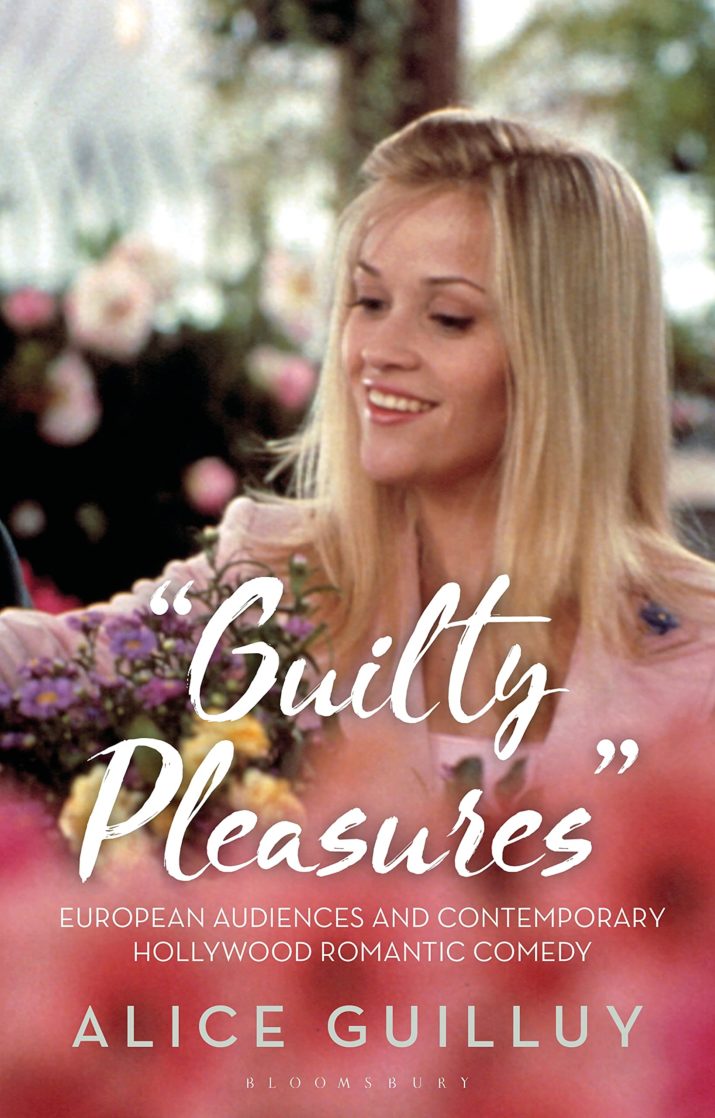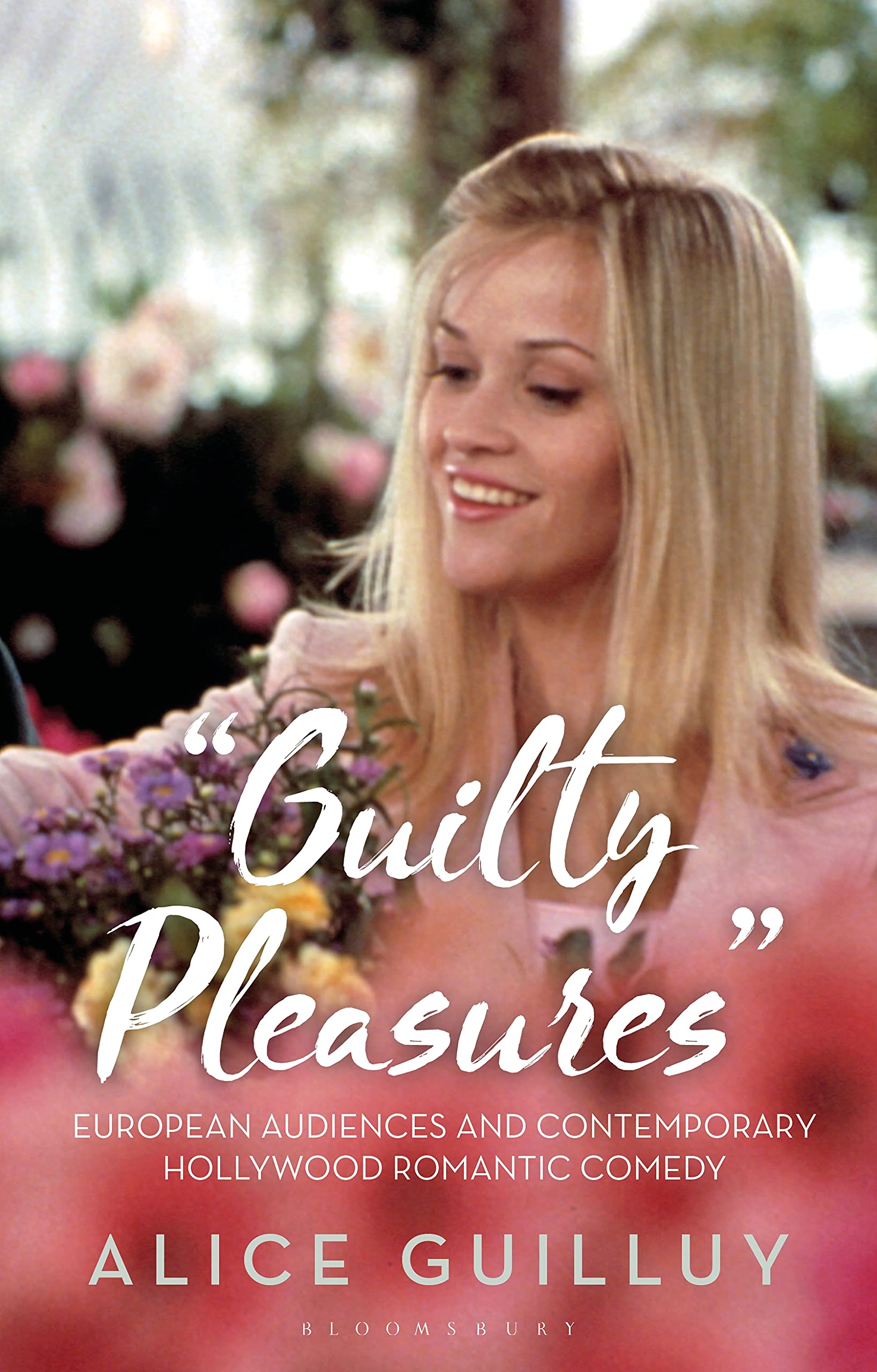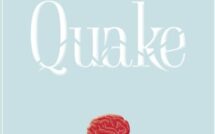

There is a contradiction invoked by the concept of “guilty pleasure,” which entails both admonishment and amusement. When one describes a film as “guilty pleasure” there is a degree of self-consciousness involved, an admission that any delight experienced is inextricably related to some sort of vice. In the case of the contemporary romantic comedy, or rom-com, these supposed vices are numerous: the genre is generally known for its fatuousness and sheer disposability, its frivolous and fantastical stories of romance, as well as a certain lack of aesthetic value. Alice Guilluy’s Guilty Pleasures, a recent addition to the Bloomsbury Academic’s Library of Gender and Popular Culture series, examines this lamented genre from the vantage point of reception studies, and attempts to re-envision the contemporary rom-com as an object of considerable complexity. Throughout the volume, Guilluy cites several interviews conducted during screenings of the 2002 Reese Witherspoon vehicle Sweet Home Alabama. Observing the various patterns displayed during these screenings, Guilty Pleasures details the myriad ways in which modern viewers, specifically viewers from the UK, France, and Germany, may receive the contemporary Hollywood rom-com, and how this mode of reception may differ from that of critics, journalists, and target audiences. Of specific interest to Guilluy are the intersecting issues of gender, class, and culture as discussed amongst European viewers. Though the book neglects to provide a concise or general appraisal of the state of the rom-com or its viewership at a transitional time when the genre seems to be disappearing from the center of popular culture, Guilluy’s qualitative approach is illuminating and astute, her study of the rom-com’s audience enjoyable and convincing.
As in most reception studies, some points of comparison are more simply extrapolated in Guilluy’s analysis than others. Journalists and critics, for instance, are nearly unanimous in their derision of rom-coms, regardless of country or language. Guilluy’s findings on this topic, namely that reviews of rom-coms serve mainly to infantilize the (presumably feminine) audience, are well-observed and incisive. She reveals that, in France especially, critics frequently reference acts of culinary preparation and food consumption, while in Germany, mechanical metaphors mark the rom-com as a formulaic Hollywood product. Guilluy places the least focus on English-language criticism of rom-coms, evidently assuming greater familiarity among her readers. Though, as Guilty Pleasures ably demonstrates, these patterns serve a similar aim in presenting the rom-com as low-culture, the food-related imagery highlighted by Guilluy is particularly revealing. Not only does the “lexical field of food” relate in disingenuous fashion the rom-com to manual labor and non-intellectual pursuits, it also suggests a variety of corporeal effects similar to those observed in such detail during Guilluy’s interviews. Indeed, many of the effects commonly associated with the contemporary rom-com are rooted in bodily experience, from feelings of excitement and erotic pleasure to physical acts such as cringing and shedding tears. These reactions are markedly distinct from the passive engagement so often described by critics; some of Guilluy’s interview subjects go as far as to describe their relationship with Sweet Home Alabama as a “power struggle.” Guilty Pleasurescaptures these experiences with remarkable clarity, detailing the experience of European viewers ranging in age, gender, nationality, and filmic expertise.
Less easily analyzed than critical attitudes are the target audiences of the rom-com, a set of elusive figures constructed according to various elements of the production, distribution, and exhibition models of contemporary offerings. Given that box-office data and public discourse suggest that the rom-com and the chick-flick are viewed interchangeably, the target audience is undeniably women. But what sorts of women are targeted, or assumed to be among this audience? The answer tends to differ, however slightly, and Guilluy takes special delight in puncturing the myth of the prototypical, working-class, unassuming female spectator. Certainly, old-hat conceptions of this target audience are commonplace: the Ladies Night events of German multiplexes indicate a cosmopolitan sort of viewer, while the specter of the midinette, the foolish Parisian shopgirl archetype, looms large in the minds of many French reviewers. Most intriguing, however, is Guilluy’s idea of the “phantom viewer,” a sort of composite drawn from various impressions of the typical rom-com audience member, made visible not only through the marketing of the films but also through their reception among audiences. This ethereal figure emerges more clearly in Guilluy’s interviews, as many of the viewer-participants seek to distinguish their own viewing experience from that of the expected female dupe, so vulnerable to the rom-com’s tropes, charms and dangers. The phantom spectator serves as a brilliant proxy for Guilluy, onto which she can project all the fallacies and stereotypes that comprise the general assumptions pertaining to the genre, in imaginations both public and private. In reality, she argues, there is no one ideal spectator for the contemporary rom-com, no one consistent romantic imagination that it inspires.
The major contribution of Guilty Pleasures is in how the book serves as a testament to the multitude ways in which the rom-com may be viewed, experienced, and enjoyed. Guilluy renders short transcripts of her interviews in painstaking detail. Her examinations of not only theme and word choice, but of vocal delivery and the complexities of group dynamics, transport the reader into the various dens and home theatres in which these screenings take place. Rendered with pauses, malapropisms, and overlapping speech intact, the interviews take on a parasocial quality, not unlike today’s casual film podcasts, as the reader experiences the film through the testimony of Guilluy’s participants. The reader’s encounter with Sweet Home Alabama is thus fittingly mediated, in much the same way that certain ideas and lifestyles are mediated for European audiences by the Hollywood rom-com (e.g., performances of traditional gender roles, inscriptions of “Americanness,” the “Happily Ever After” trope). Participants repeat lines, sometimes mockingly, and perform reactions with varying degrees of sincerity, according to their own articulated notions of the rom-com’s phantom viewer, while Guilluy charts their complicated oscillation between critique and enjoyment, and the “shifting identities” thereby employed, including feminist perspectives. In this way, Guilty Pleasures evokes the effervescent charm of the contemporary rom-com while still providing plenty of food for thought.
The rich parallel between the performed enjoyment of the viewer-participants and the arch style of acting so common in the Hollywood rom-com is but one of many fascinating threads that take shape over the course of Guilty Pleasures. However, Guilluy disregards performance analysis and further aesthetic considerations to focus primarily on the responses of the participants themselves, choosing to examine these responses through various lenses of feminist theory and film studies. This approach, though valid, entails such strict parameters that readers in search of a serious study of the rom-com as an art-object (which, as critical attitudes suggest, would require a radical re-positioning of the films) will be left wanting. Though Guilluy demonstrates great tact and subtlety in mounting her defense of the genre, some common assumptions about the rom-com are still embraced. The opinion that rom-coms employ an indistinct and superficial visual system, for instance, incurs little resistance or discussion from Guilluy, even though this is a central component of the widespread critical derision which the book so intelligently skewers. Presumptions of a working-class target audience, meanwhile, are hardly challenged by Guilluy’s range of participants, most of whom are middle-class women. Indeed, a certain lack of diversity among the interview subjects, while perhaps generative to Guilluy’s feminist analysis (since many of the participants self-identify as feminists), obstructs what may have been a more complex and substantial reckoning with the rom-com’s supposedly conservative inclinations. Hence, the limitations of this study are most apparent when participants are unanimous in their opinions, as in their criticism of Sweet Home Alabama’s conservative values and myth-making, which are seen as distinctly, and demonstrably, American. Another line of inquiry, suggested but ultimately relegated to the book’s periphery, concerns the comparison between the rom-com as a theatrical attraction and as a source of domestic comfort: on several occasions, participants distinguish the rom-com from more spectacle-driven Hollywood fare, highlighting how the former is best experienced within the social atmosphere of a living space. A detailed comparison between this sort of viewing experience, so well-observed by Guilluy, and European theatrical excursions, remains a subject for further research.
Due to the narrowness of its scope, Guilty Pleasures will appeal to a very particular range of readers, though its niche field of interest also allows for analytical precision. Those who study the rom-com as a genre will benefit from the fresh outlook on how these films are appreciated on the fringes of fan culture. Additionally, scholars focused on European reception studies will enjoy Guilluy’s deft articulation of how different European audiences respond to the comedy stylings of contemporary Hollywood.
Hayden Bytheway is an MA student at York University. He is currently writing a major research project on the early philosophy of Henri Bergson and modernist narratives in cinema.
‘Guilty Pleasures’: European Audiences and Contemporary Hollywood Romantic Comedy
By Alice Guilluy
Publisher: Bloomsbury Academic
Hardcover / 304 pages / 2021
ISBN: 9781350163034




